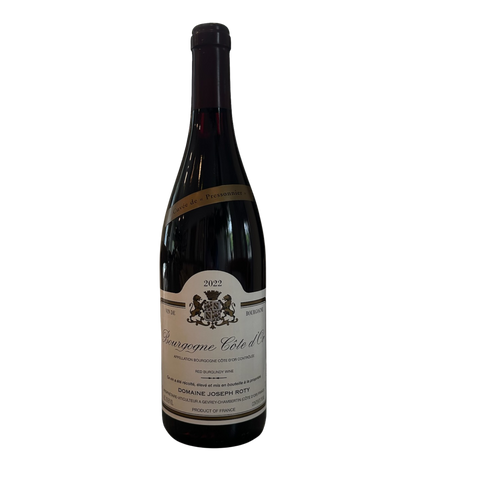
2022 Domaine Joseph Roty Bourgogne Côte d'Or "Cuvée de Pressonnier", Burgundy, France
A finely detailed old-vine Pinot Noir that delivers aromatic lift and structural poise. Red raspberry, wild strawberry, and hints of blueberry rise from the glass, leading to a palate of black cherry and fresh blueberry with a subtle chalky edge. Bright acidity and fine tannins carry the fruit to a long, refreshing finish.
There are 12 units left in stock.
ABOUT THIS WINE
This cuvée is sourced from a single parcel of 70-plus-year-old Pinot Noir vines rooted in clay-limestone soils just outside Gevrey-Chambertin. Formerly within the Gevrey appellation before boundary changes in the 1990s, the site retains much of that village’s depth and complexity. Fermentation is gentle, with a three-week cuvaison below 30 °C to preserve aromatic purity. The wine is aged for 18 months—20 % in new oak barrels and the rest in cement vats—followed by a further 10 months of cellar rest before release. Its profile balances vivid red fruit with mineral freshness, while the fine structure promises graceful aging for 10–20 years. An excellent match for roast duck, mushroom dishes, or aged Comté.
ABOUT THIS PRODUCER
Domaine Joseph Roty is a renowned family estate located in the heart of Gevrey-Chambertin, Burgundy. The estate has been producing wines since 1960 and is currently managed by brothers Pierre-Jean and Philippe Roty, representing the 11th generation of winemakers in the family. The Roty family has been passionate about winegrowing since the early 18th century.
The vineyards are situated in the Côte de Nuits region, known for its exceptional Pinot Noir. The estate practices traditional viticulture, with a focus on old vines, some dating back to 1881. The use of pesticides and herbicides is avoided, and the vines are grown on clay-limestone soils.
Details:
| Grape(s) | Pinot Noir |
| Farming | Organic |
